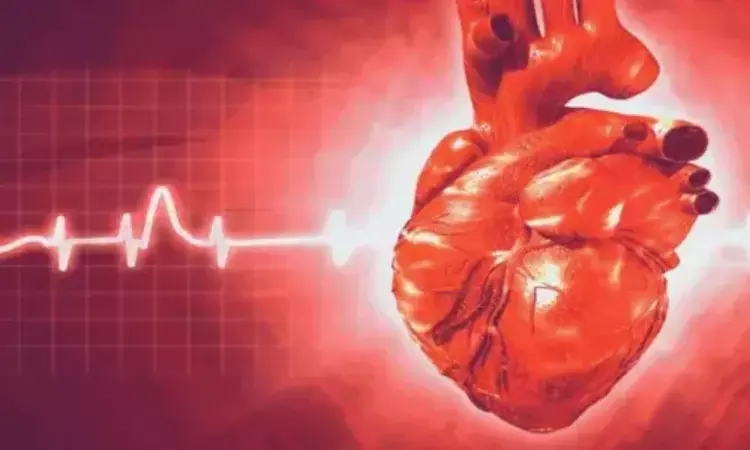- Home
- Medical news & Guidelines
- Anesthesiology
- Cardiology and CTVS
- Critical Care
- Dentistry
- Dermatology
- Diabetes and Endocrinology
- ENT
- Gastroenterology
- Medicine
- Nephrology
- Neurology
- Obstretics-Gynaecology
- Oncology
- Ophthalmology
- Orthopaedics
- Pediatrics-Neonatology
- Psychiatry
- Pulmonology
- Radiology
- Surgery
- Urology
- Laboratory Medicine
- Diet
- Nursing
- Paramedical
- Physiotherapy
- Health news
- Fact Check
- Bone Health Fact Check
- Brain Health Fact Check
- Cancer Related Fact Check
- Child Care Fact Check
- Dental and oral health fact check
- Diabetes and metabolic health fact check
- Diet and Nutrition Fact Check
- Eye and ENT Care Fact Check
- Fitness fact check
- Gut health fact check
- Heart health fact check
- Kidney health fact check
- Medical education fact check
- Men's health fact check
- Respiratory fact check
- Skin and hair care fact check
- Vaccine and Immunization fact check
- Women's health fact check
- AYUSH
- State News
- Andaman and Nicobar Islands
- Andhra Pradesh
- Arunachal Pradesh
- Assam
- Bihar
- Chandigarh
- Chattisgarh
- Dadra and Nagar Haveli
- Daman and Diu
- Delhi
- Goa
- Gujarat
- Haryana
- Himachal Pradesh
- Jammu & Kashmir
- Jharkhand
- Karnataka
- Kerala
- Ladakh
- Lakshadweep
- Madhya Pradesh
- Maharashtra
- Manipur
- Meghalaya
- Mizoram
- Nagaland
- Odisha
- Puducherry
- Punjab
- Rajasthan
- Sikkim
- Tamil Nadu
- Telangana
- Tripura
- Uttar Pradesh
- Uttrakhand
- West Bengal
- Medical Education
- Industry
CRT With His-Purkinje Conduction System Pacing significantly improves LVEF among HF patients

A recent pilot study known as HOT-CRT has shown that for patients with heart failure, a reduced ejection fraction (HFrEF) who require cardiac resynchronization therapy (CRT), His-Purkinje conduction system pacing (HPCSP) is both safe and effective as published in JACC: Clinical Electrophysiology by Pugazhendhi Vijayaraman and colleagues. In fact, the study found that HPCSP can provide a more significant improvement in left ventricular ejection fraction (LVEF) compared to traditional biventricular pacing.
The HOT-CRT pilot study included 100 patients with HFrEF and an indication for CRT.
Patients were divided into two groups: those receiving HPCSP and those undergoing biventricular pacing.
The primary outcome measured was the change in LVEF over six months.
- After six months, patients treated with HPCSP experienced a mean increase in LVEF of 12.4%, significantly higher than the 8.0% observed in the biventricular pacing group (P = 0.02).
- HPCSP resulted in a higher success rate (96% vs. 82%) with similar fluoroscopy and procedure durations compared to biventricular pacing.
- There was no significant difference in the primary safety outcome, freedom from major complications, between the two groups (98% vs. 96%).
- Overall adverse events were less frequent in the HPCSP group (6% vs. 20%, P = 0.04).
- The HOT-CRT pilot study suggests that HPCSP-guided CRT may offer greater improvements in LVEF compared to biventricular pacing, potentially translating into reduced heart failure hospitalizations or mortality.
- The findings provide support for the concept of conduction system pacing as an effective approach for patients requiring CRT.
- Larger randomized clinical trials, such as the ongoing Left vs. Left trial with approximately 2,100 patients, will further evaluate the benefits of HPCSP compared to traditional pacing methods.
While conduction system pacing shows promise, long-term studies are needed to assess lead placement and potential complications associated with this approach. In summary, the HOT-CRT pilot study sheds light on the potential advantages of His-Purkinje conduction system pacing in cardiac resynchronization therapy for heart failure patients. This study serves as a stepping stone towards confirming the benefits of HPCSP through larger clinical trials, offering hope for improved treatment options for individuals with heart failure and reduced ejection fraction.
Reference:
Vijayaraman P, Pokharel P, Subzposh FA, et al. His-Purkinje conduction system pacing optimized trial of cardiac resynchronization therapy (HOT-CRT) versus biventricular pacing. J Am Coll Cardiol EP.
Dr Riya Dave has completed dentistry from Gujarat University in 2022. She is a dentist and accomplished medical and scientific writer known for her commitment to bridging the gap between clinical expertise and accessible healthcare information. She has been actively involved in writing blogs related to health and wellness.
Dr Kamal Kant Kohli-MBBS, DTCD- a chest specialist with more than 30 years of practice and a flair for writing clinical articles, Dr Kamal Kant Kohli joined Medical Dialogues as a Chief Editor of Medical News. Besides writing articles, as an editor, he proofreads and verifies all the medical content published on Medical Dialogues including those coming from journals, studies,medical conferences,guidelines etc. Email: drkohli@medicaldialogues.in. Contact no. 011-43720751


